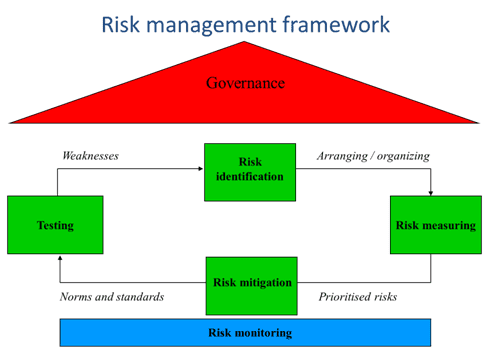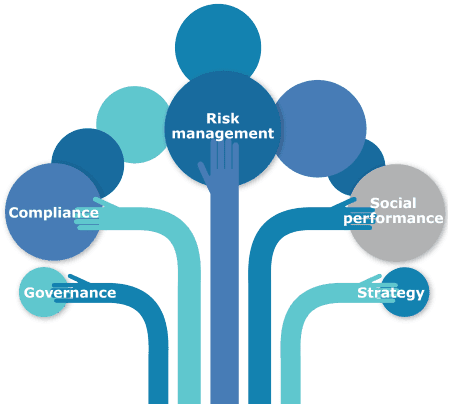Risk management
In a more and more complex world it is crucial to have risk management integrated in your business.
The main risk categories are:
- Financial risks, for example credit risk, market risk and liquidity risk; asset & liability management (ALM)
- Non-financial risk, for example operational risk, compliance risk and reputation risk
Many organisations struggle with questions like:
- How can I introduce risk management in an effective way?
- How do I make risk management an integrated part of my day to day business?
- How do I find the right balance between financial and social objectives?
- How can I detect the most important risks in my organisation?
- How do I create more risk awareness with management and staff?
- What are practical tools? for risk management?
- How can I structure risk management by means of a risk framework?
- Do we have the right system of controls, or do we even have too many controls in place?
Do you recognise these questions?
Risktensive management can design a tailored program together with you. The program is drafted to increase the effectiveness of risk management within your organisation. This means: above all practical and embedded in your organisation.
Risk framework
An important starting point for risk management is the introduction and implementation of the risk framework. What is that?
There are many models around, but this simple model contains all important components:

Governance
Good governance is an essential pre condition for effective risk management. So, in case there are governance issues, it is important to tackle these first. Furthermore, risk management has to be built in in the governance of the organisation. Risktensive management will work together with board and management in this process.
Risk identification
Risks can be identified by analysing internal and external triggers. But an active risk management goes beyond these triggers. In order to do it important to ‘think out of the box’. Risktensive management can facilitate this process.
Risk measurement
Risks have to be measured in order to be able to make a distinction between acceptable and non-acceptable risks. The risk appetite of the organisation is the determining factor for this. The level of risk is also important for the prioritisation of the risks. Not only financial, but also non-financial risks are measured. Risktensive management can define this risk appetite together with you.
Risk mitigation
The best way to mitigate risks is to try to prevent them from happening. However, this is not fully possible in most cases. So it is also important to lower the impact of the risk. In most cases a combination of controls has to be implemented: policies, procedures, limits, awareness training, built in IT controls… However, it is important to have a balanced approach in this. Too many controls are contra-productive. Risktensive management helps you to find the right balance.
Risk monitoring
The implementation of a risk framework is not a ‘one-off’. The risk framework of the organisation has to be monitored. A risk dashboard is one of the tools to do this. Risktensive management can guide you in designing and implementing the right tools.
Testing
It is necessary to execute testing and to perform audits in order to ensure that risks are kept to an acceptable level. In this way, weaknesses can be identified in an early stage. Risktensive management will facilitate the process to get risk management and audit aligned, so that they speak the same language.
Tools
Several methods and tools can be applied to manage risks.
A very powerful method is the so-called Risk and Control Self-Assessment workshop (RCSA). This RCSA workshop is aligned with the components of the risk framework.
There are practical methods and tools available for each part of the risk framework.
